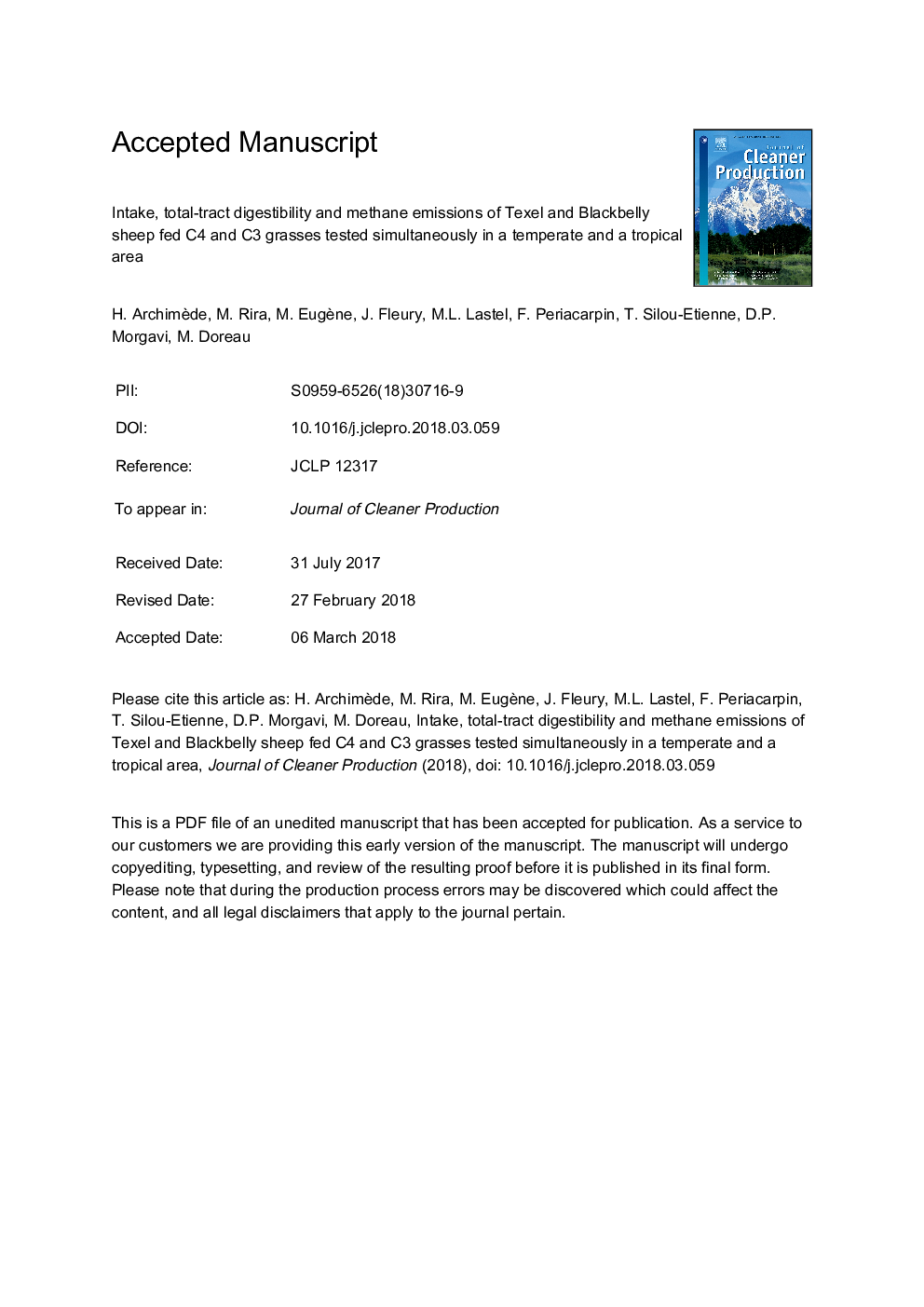| Article ID | Journal | Published Year | Pages | File Type |
|---|---|---|---|---|
| 8096475 | Journal of Cleaner Production | 2018 | 34 Pages |
Abstract
This experiment was designed to better understand the differences in enteric methane (CH4) emissions of ruminants in tropical and temperate areas. Two double 4â¯Ãâ¯4 Latin squares using adult sheep were evaluated simultaneously in a temperate and a tropical site. At each site, two breeds (four Texel, temperate origin, and four Blackbelly, tropical origin) and four hay types (two C3 grasses and two C4 grasses grown, respectively, in temperate and tropical sites) were tested. High-(H) and low-quality (L) grass hays were tested within each type of grass. No difference in dry matter (DM) intake (g/kg BW/d) was observed between sites. Intake of C4 grass was lower than that of C3 grass. A breedâ¯Ãâ¯site interaction was observed. In the tropical site, dry matter intake (g/kg BW/d) was higher in Blackbelly compared to Texel, whereas no difference was observed in the temperate site. The total-tract DM, OM (organic matter), NDF (neutral detergent fiber) and ADF (acid detergent fiber) digestibility values recorded in the temperate site were lower (Pâ¯<â¯0.01) than those reported in the tropical site. Methane yield (g/kg DM intake) was not affected by site, whereas a breedâ¯Ãâ¯site interaction was observed. In the tropical site, methane emission was lower for Blackbelly compared to Texel, whereas the opposite was observed in the temperate site. Differences in methane emissions between the temperate and tropical sites could only be the result of diet and breed interactions with the environment.
Related Topics
Physical Sciences and Engineering
Energy
Renewable Energy, Sustainability and the Environment
Authors
H. Archimède, M. Rira, M. Eugène, J. Fleury, M.L. Lastel, F. Periacarpin, T. Silou-Etienne, D.P. Morgavi, M. Doreau,
